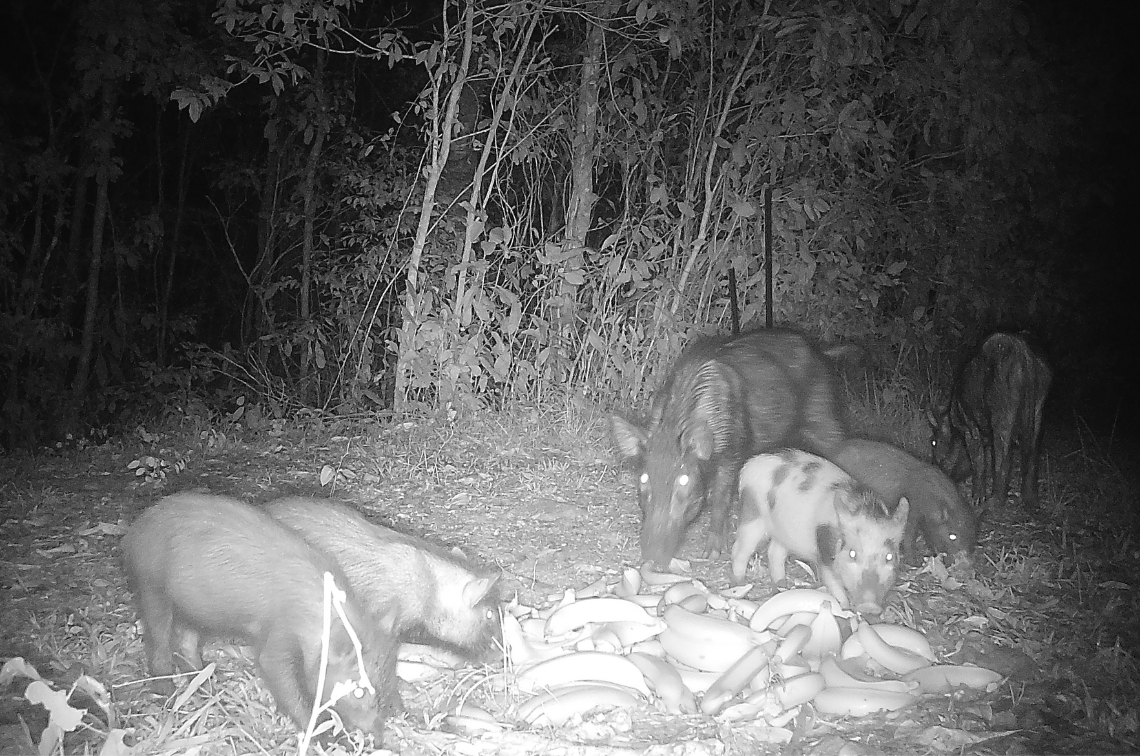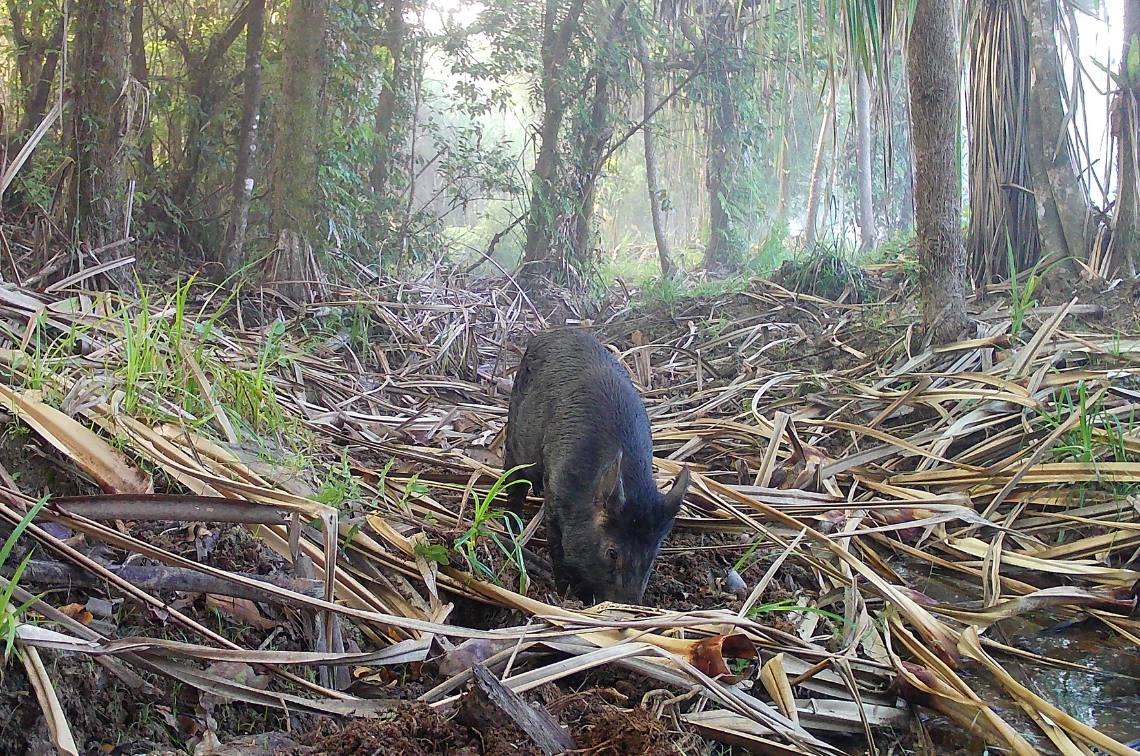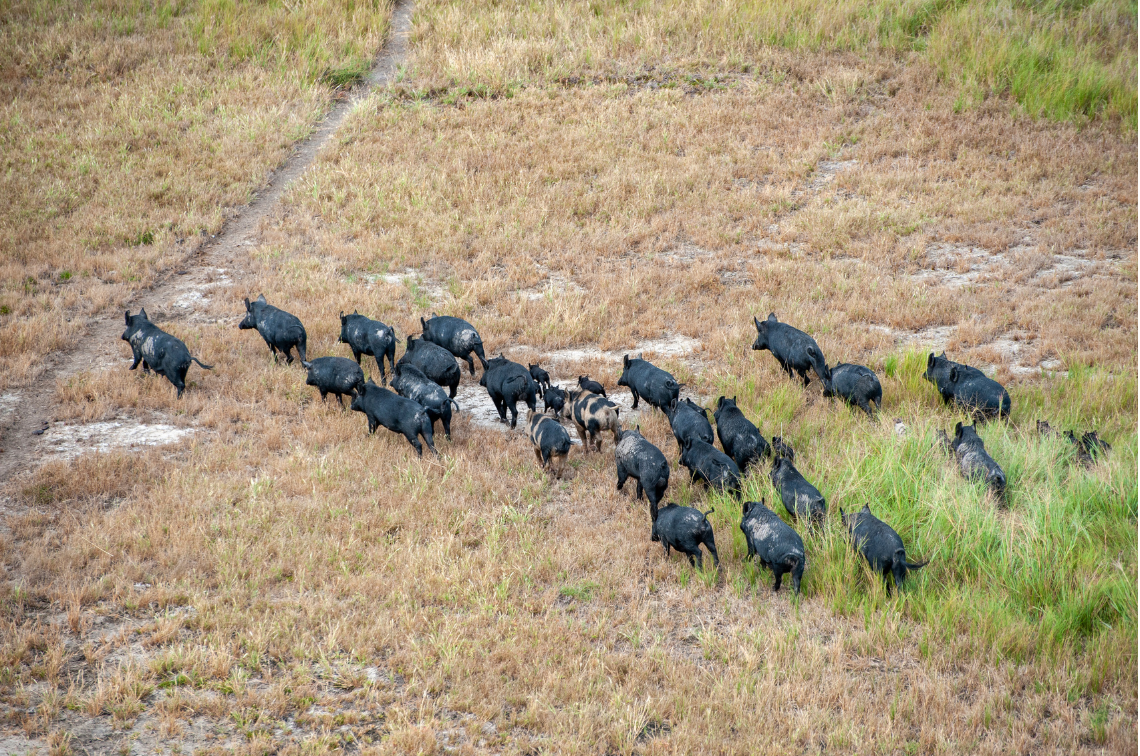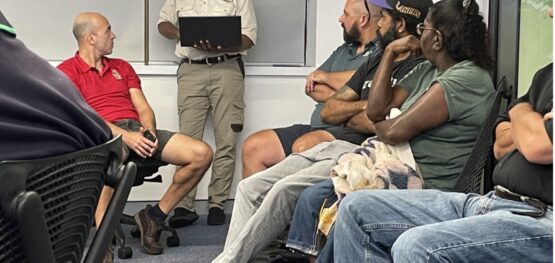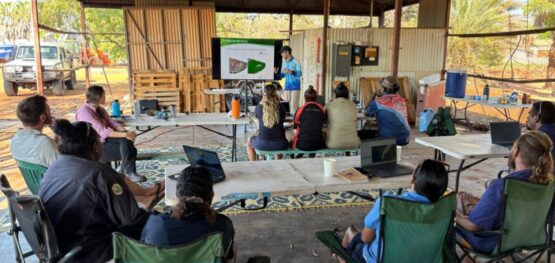Article
26 March 2025
Indigenous-led feral ungulate management in Northern Australia offers a promising pathway for preserving biodiversity, cultural values, and biosecurity, a Marine and Coastal Hub project has found.
The project was led by the North Australian Indigenous Land and Sea Management Alliance (NAILSMA). Its findings emphasise the need for a coordinated, Indigenous-driven approach to control feral ungulate species such as pigs, buffalo and wild cattle that threaten sensitive ecosystems and cultural sites in northern Australia. Indigenous organisations are uniquely positioned to manage these threats, offering solutions grounded in deep local knowledge and cultural practices.
“Indigenous organisations have the knowledge, skills and commitment to protect our Country,” hub project leader Dr Justin Perry of NAILSMA said. “With targeted support, they can implement sustainable feral animal management on a regional scale and lead in protecting Australia’s unique landscapes and cultural heritage from invasive species.”
In collaboration with the Indigenous Carbon Industry Network, the project completed detailed mapping of Indigenous land tenure across Australia, a key step in understanding the legal landscape and fostering cooperation for regional feral animal control. The mapping reveals that Indigenous lands account for more than 52% of Australia’s terrestrial area, from Indigenous Protected Areas to freehold land, with significant overlap in conservation estates. This reinforces the need for collaborative management models.
Data gathered from workshops, case studies and online surveys indicated that many Indigenous groups are actively engaged in feral animal management activities, but efforts are hindered by insufficient resources and lack of formal coordination across vast, remote areas. Key barriers to effective feral ungulate control include limited access to funding, seasonal constraints, and high staff turnover within Indigenous ranger programs. Infrastructure challenges and access to essential equipment by Indigenous organisations are also critical areas for investment.
Another significant finding is the importance of local governance. The project report details how Indigenous organisations make decisions in consultation with Traditional Owners, ensuring that cultural values guide management efforts. A conceptual model highlights the need for a tenure-aware approach, local governance, and capacity-building to drive effective feral ungulate control. This model provides a framework that aligns with Indigenous governance, supporting sustainable, culturally-informed conservation efforts.
The project findings emphasise the importance of Indigenous-led feral ungulate management to lasting environmental and cultural protection. It recommends expanding resources and formalising support for Indigenous-led programs that empower Indigenous communities to protect northern Australia’s biodiversity and cultural assets effectively and sustainably.

